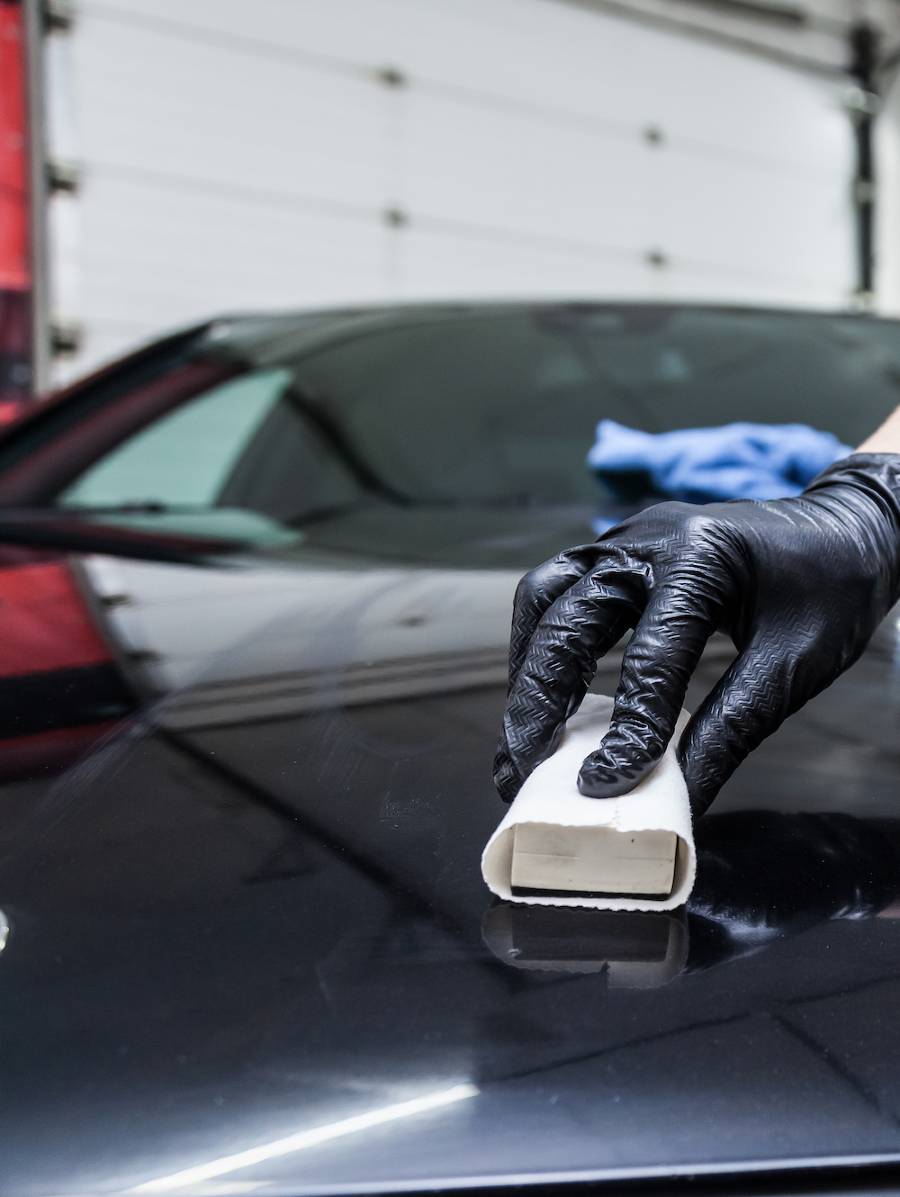The Function of Ceramic Finish in Safeguarding Your Cars and truck's Paint From Environmental Damage
Ceramic finish has emerged as an advanced solution for car owners looking for to maintain the honesty of their automobile's exterior. As we explore the nuances of ceramic coating, it becomes obvious that the selection to apply this protective step might significantly influence your lorry's durability and aesthetic.
What Is Ceramic Finish?
Ceramic finish is an advanced fluid polymer put on the external surfaces of a car, designed to offer a long lasting layer of protection for the paint. This cutting-edge option develops a chemical bond with the automobile's manufacturing facility paint, producing a hydrophobic and durable guard. The covering consists of nanoparticles that complete the microscopic flaws in the paint, resulting in a smooth surface area that enhances radiate and gloss.
Commonly, ceramic layers are offered in numerous formulations, permitting various degrees of security and long life. While some items can last for several months, others use protection for a number of years, depending on the density of the application and environmental factors. The application procedure calls for precise prep work, consisting of cleaning, sanitizing, and polishing the automobile's surface area to make sure optimal bond of the layer.

Advantages of Ceramic Covering
Among the main advantages of applying a ceramic finishing is the phenomenal protection it provides to vehicle paint. This advanced coating forms a sturdy layer that guards the vehicle's surface from a selection of ecological threats, consisting of UV rays, acid rainfall, bird droppings, and tree sap. By providing this robust protection, ceramic coverings substantially decrease the threat of fading and etching, protecting the cars and truck's visual allure with time.
In addition to security, ceramic coverings are renowned for their hydrophobic buildings, which push back water and dirt, making it less complicated to keep a tidy vehicle. This self-cleaning effect minimizes the frequency of cleaning, saving both time and resources. Ceramic coatings enhance the depth of the paint's gloss, resulting in a dynamic and sleek look that elevates the general appearance of the car.
One more noteworthy benefit is the durability of ceramic coatings. Unlike conventional waxes or sealants that call for regular reapplication, ceramic coatings can last a number of years, providing a cost-efficient service for auto owners looking for long-lasting defense. Generally, buying ceramic covering leads to improved toughness, reduced upkeep, and sustained visual allure for vehicle paint.
How Ceramic Finish Functions
A ceramic finish operates through a chemical bonding process that creates a safety layer on the automobile's paint surface area. This ingenious service makes use of innovative nanotechnology, where microscopic fragments of silica are suspended in a liquid kind - ceramic coating. Upon application, these fragments bond with the manufacturing facility paint, forming a hydrophobic and sturdy layer that boosts the vehicle's surface area
The main part of ceramic finishes, silicon dioxide (SiO2), contributes to the layer's stamina and strength. When treated, blog here the layer transforms right into a difficult, glass-like coating that guards the paint from environmental pollutants such as dust, UV rays, bird droppings, and tree sap. This molecular bond leads to a surface that is not only resistant to scrapes however also less complicated to clean up, as dust and grime are less most likely to adhere.
In addition, the hydrophobic residential or commercial properties of ceramic finishes cause water to grain and slide off, reducing the possibilities of water areas and mineral deposits. This safety obstacle effectively prolongs the life of the paint and maintains the car's aesthetic charm, offering auto owners a resilient solution for paint security.
Application Refine of Ceramic Finishing
When taking into consideration the application of ceramic coating, prep work is key to attaining ideal results. The very first step involves thoroughly cleaning the lorry to remove dirt, grime, and pollutants from the surface area. This usually consists of a purification procedure utilizing clay bars or chemical cleansers to ensure the paint is perfectly clean. Any type of scrapes or flaws need to be dealt with at this stage, as the finish will bond with the surface beneath.

Ceramic covering is then used in small areas, normally making use of an applicator pad. It is critical to work in even strokes, making certain uniform coverage. The covering needs to be enabled to heal for a specified time, which can differ depending upon the item made use of. After the first application, a high-grade microfiber towel is used to rub the surface area, boosting gloss and making sure a smooth surface. The automobile should be left to treat in a regulated atmosphere to permit the finish to totally bond with the paint.
Long-Term Maintenance and Treatment
Accomplishing an effective ceramic covering application sets the foundation for long-term defense, but appropriate upkeep is essential to maintaining its benefits. Normal cleaning is important; using a pH-neutral vehicle hair shampoo will help preserve the finishing's honesty without causing damage. Stay clear check my site of automated car cleans that use rough products, as they can endanger the coating's surface area.

Moreover, applying a ceramic finish maintenance spray can enhance the existing layer, offering an extra boost in security and shine. It's recommended to execute this every three to 6 months, depending upon ecological direct exposure.
Lastly, auto parking in shaded locations or using vehicle covers can avoid extended exposure to dangerous UV rays and ecological contaminants, even more expanding the life of your ceramic covering. By adhering to these upkeep methods, you can ensure your automobile's coating stays secured and aesthetically appealing for many years to come.
Final Thought
In recap, ceramic finish offers as an essential protective action for auto paint, properly protecting cars from a range of ecological threats. Its capacity to develop a durable hydrophobic obstacle not just boosts aesthetic appeal but likewise considerably reduces the regularity and intensity of maintenance called for. The long-lasting nature of this advanced polymer highlights its worth in maintaining vehicle honesty and look, ultimately adding to a more long lasting and aesthetically appealing automobile coating.
Ceramic covering is an advanced fluid polymer applied to the exterior surface areas of a vehicle, designed to give a long lasting layer of protection for the paint. Ceramic finishes boost the deepness of the paint's gloss, resulting in a refined and vibrant appearance that boosts the overall appearance of the car.
A ceramic covering runs through a chemical bonding process that develops a safety layer on the automobile's paint surface.The main part of ceramic layers, silicon dioxide (SiO2), contributes to the finishing's toughness and strength.In summary, ceramic finishing serves as a crucial protective measure for automobile paint, successfully protecting cars from an array of environmental threats.